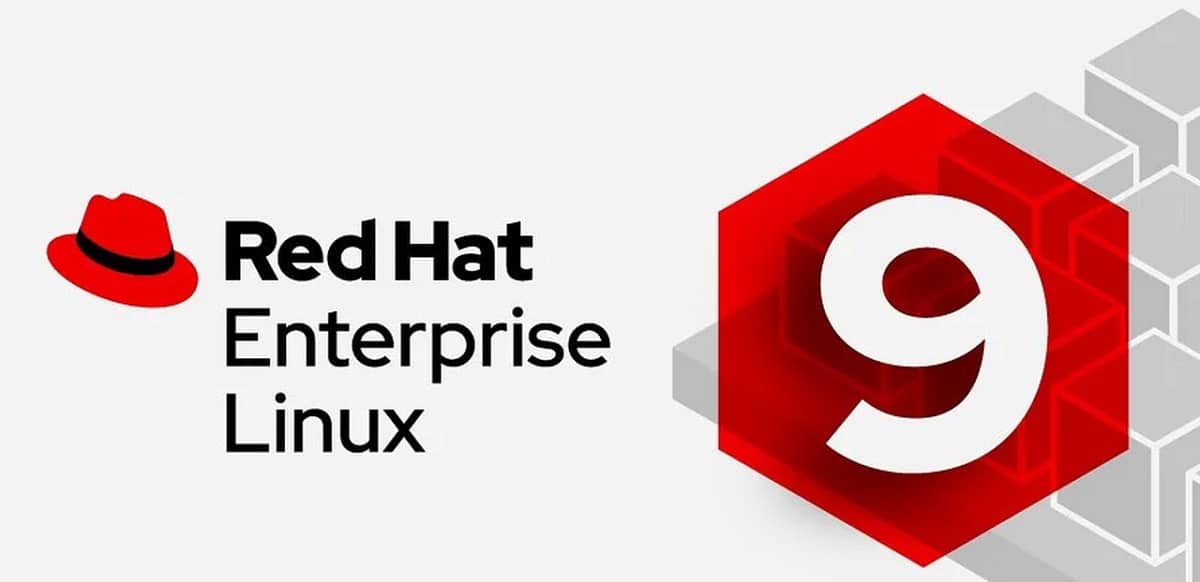
Red Hat announced the release of the new version of your distribution "Red Hat Enterprise Linux 9" which, in accordance with the 10-year support cycle for the RHEL 9 distribution, will continue until 2032 and that updates for RHEL 7 will continue to be released until June 30, 2024, RHEL 8 until May 31, 2029.
The Red Hat Enterprise Linux 9 distribution is notable for its move to a more open development process. Unlike the previous branches, the CentOS Stream 9 package base is used as the basis for building the distribution.
What's New in Red Hat Enterprise Linux 9
This new version of the distribution arrives with the Linux kernel 5.14, RPM 4.16 with support for integrity control through fapolicyd, GNOME 40 and the GTK 4 library, in addition to the migration of the distribution to Python 3, being in this new version of RHEL the default version of Python 3.9 and marking the end of Python 2 as it has been discontinued.
By default, GRUB boot menu is hidden if RHEL is the only distribution installed on the system and if the last boot was successful. To display the menu during boot, simply hold down the Shift key or the Esc or F8 key several times. Of the bootloader changes, it is also observed location of GRUB configuration files for all architectures in the same /boot/grub2/ directory (the /boot/efi/EFI/redhat/grub.cfg file is now a symlink to /boot/grub2/grub.cfg), those. the same installed system can be booted using EFI and BIOS.
By default, a single unified cgroup hierarchy (cgroup v2) is enabled. Cgroups v2 can be used, for example, to limit memory, CPU, and I/O consumption. The key difference between cgroups v2 and v1 is the use of a common cgroups hierarchy for all resource types, rather than separate hierarchies for CPU allocation, memory management, and I/O. The separate hierarchies created difficulties in organizing the interaction between drivers and additional kernel resource costs when applying rules for a named process in different hierarchies.
Significantly improved SELinux performance and reduced memory consumption. Removed support for setting "SELINUX=disabled" to disable SELinux in /etc/selinux/config (specified setting now only disables policy loading, and in fact disabling SELinux functionality now requires passing "selinux=0" to the kernel).
It is also highlighted that added support for precise time synchronization based on the NTS protocol (Network Time Security), which uses elements of a public key infrastructure (PKI) and allows the use of TLS and authenticated encryption AEAD (Authenticated Encryption with Associated Data) for the cryptographic protection of client-server interaction over the NTP protocol ( Network Time Protocol). The chrony NTP server has been updated to version 4.1.
In addition to this, it is highlighted that experimental support provided (Tech Preview) for KTLS (TLS kernel-level implementation), intel sgx (Software Protection Extensions), DAX (Direct Access) for ext4 and XFS, support for AMD SEV and SEV-ES in the KVM hypervisor.
Of the other changes that stand out:
- Added experimental support for WireGuard VPN.
- By default, SSH login as root is disabled.
- Removed network scripts package, NetworkManager should be used to configure network connections.
- Support for the ifcfg configuration format has been retained, but NetworkManager has a default format based on the key file.
- Updated server packages Apache HTTP Server 2.4.48, nginx 1.20, Varnish Cache 6.5, Squid 5.1.
Updated DBMS MariaDB 10.5, MySQL 8.0, PostgreSQL 13, Redis 6.2. - SSSD (System Security Services Daemon), the detail of the logs has been increased.
- IMA support has been extended
Finally, if you are interested in knowing more about it, you can consult the details In the following link.
Get Red Hat Enterprise Linux
Ready-to-use installation images will soon be available to registered users of the Red Hat Customer Portal (you can also use CentOS Stream 9 iso images to test functionality).
The release is designed for x86_64, s390x (IBM System z), ppc64le, and Aarch64 (ARM64) architectures. The sources for the Red Hat Enterprise Linux 9 rpm packages are located in the CentOS Git repository.